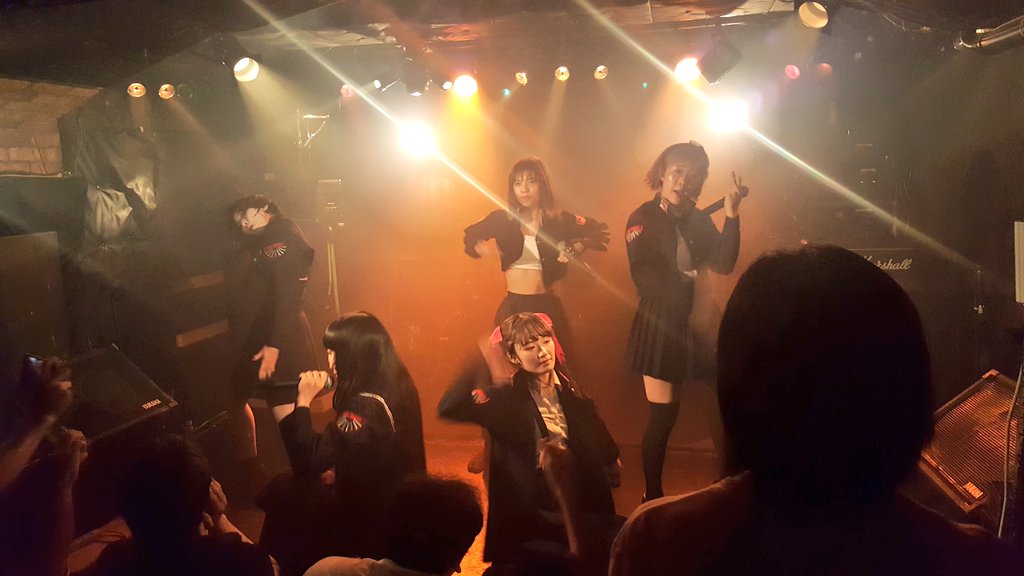I won't pretend to fully understand Japanese idols. I get the general concept: attractive young performers singing and dancing to pop music. If I had to explain it to someone with no concept of things like Hatsune Miku or Perfect Blue, I would say "boy bands, but Japanese, and often girls." I am late to the alternative idol scene, as well, and a lot of the bands are good but, for my personal taste, too polished. It makes sense. It's pop music, and that's what Japan often does: take a Western thing we were done with a while ago, do it better. A lot of the current J-metal bands smack of guys like Atreyu, As I Lay Dying, Between the Buried and Me, and countless other early 2000s Hot Topic darlings of the post-hardcore/metalcore genre. But cleaner, more polished, and more aware of their niche.
Speaking of niches, apparently idols are doing the same. I became aware of alternative idols through a video produced by This Exists, a channel all about things you might not know about but should. Everyone knows, even if only by gimmick, Babymetal. They toured with Rob Zombie, if that speaks to their cultural significance and how accurate that "Hot Topic darlings" affiliation is. Babymetal is a decent entry point into alternative idols, with heavy but unoffensive music, utilizing traditional idol girl aesthetics and performances, subverting the genre enough to be noticed but little enough to still basically be pop. As the This Exists explainer... explained, there are far more niche groups to choose from, and one stuck out to me most from that video, walking around in the snow in Aokigahara Forest to blast beats and trem picking guitar. Necronomidol differs from some of the other idol groups in ways that make them much more appealing to me.

Before we get into the music more, there are the girls themselves. Idols are much like boy bands or girls (were there really any girl bands that weren't the Spice Girls?), with each member fitting a style and personality type. I can't begin to speak to the various types that exist, but the five members of this group are pretty easy to identify. There's the sort of dark aesthetic, high fashion member, Sari, who looks most like the band's theme, wearing white face paint and a plastic spider on her cheek. She's my favorite, though that's probably like Justin Timberlake being your favorite member of N'Sync, and similarly, she's probably the most recognized/recognizable. Risaki's outfit has a binder and midriff exposed, suggesting something like a Japanese girl gang member; she's, I believe, the leader of the group, being one of the founding members. Rei looks most like a traditional idol, the only member without dark or dyed hair, and also does solo performances outside of the group. Hina is the smallest and youngest, sometimes being unable to attend shows due to her school schedule; she's always got pigtails and an ultracute personality. Himari is most difficult for me to pin down from her appearance and performance, but through her social media, you get a better idea of her interests and personality. She's a bit of an otaku and seems to be the most ironic and funny; In a past Halloween, when all of the band members dressed as classic horror characters, Himari went as Celestia from Dangan Ronpa. She's Miramay's best girl.
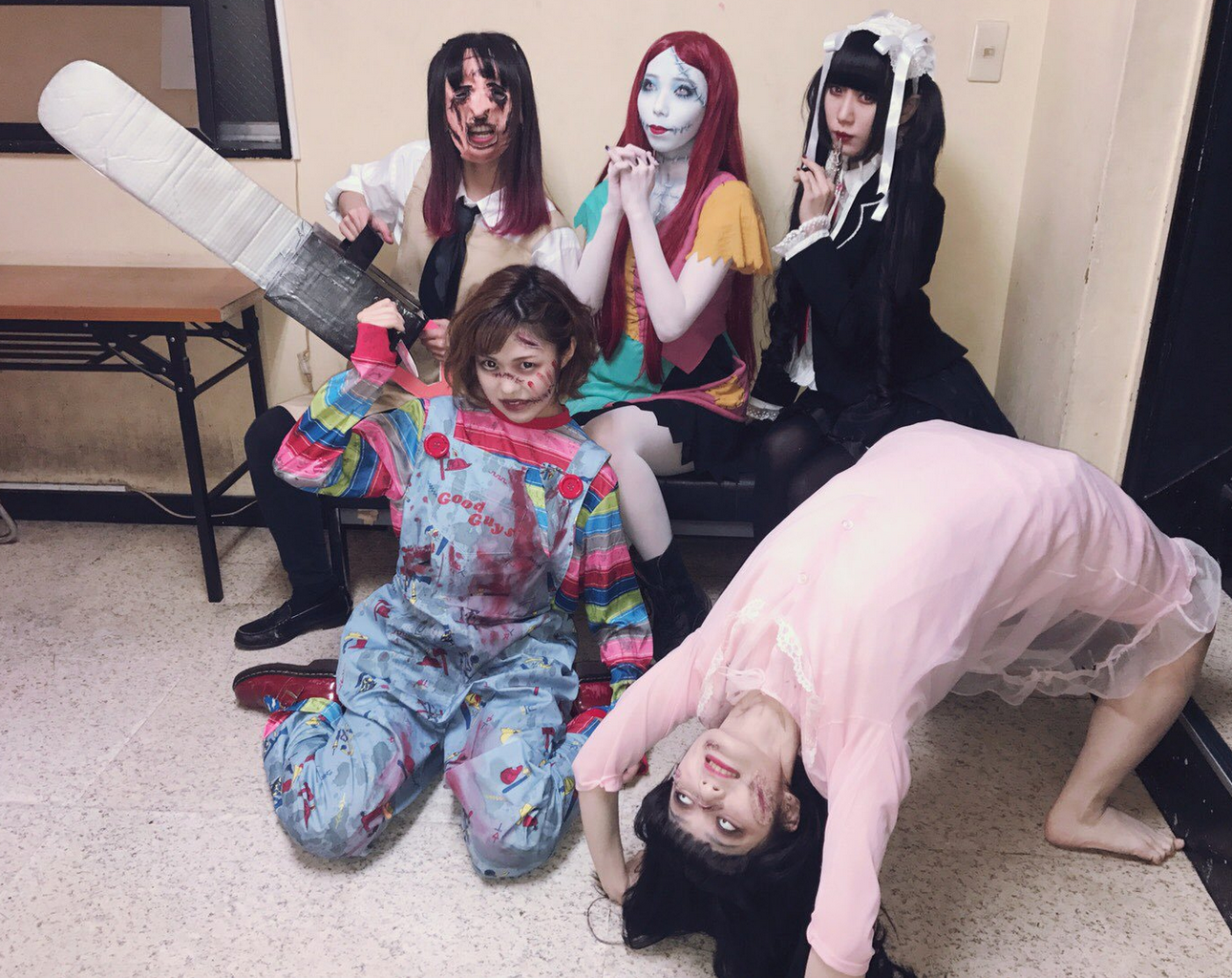
The sound of Necronomidol (sometimes affectionately called Necroma by fans) itself is often black metal and dark wave, with some songs treading on other rock and metal territories. I never cared much for black metal as music; I loved the concept, but it gets a bit exhausting after a while, and I suspect even it's biggest fans like it best for it's concepts and aesthetics more than the actual songs. Five singing and dancing women make it much more listenable for a long duration, personally. On the opposite end, idol groups don't usually appeal to me because the music is generally polished and produced to a point that it feels dishonest as heavy music. Necronomidol's recordings are often a little more DIY in quality than acts that rely on music closer to scenester metalcore than older metal genres. That isn't to say they haven't become a little sleeker over time, and have even put out some well produced music videos (most recently of this writing the music video for Strange Aeons, a hybrid of Lovecraftian imagery and magical girls). The performers themselves also seem to be adults, something that also makes me feel a little more at ease participating in the culture of being a fan. Something about idolizing a lolita-styled child as a grown man puts me off a bit. No judgement; my understanding of idol culture is pretty limited, but this is my benchmark and entry point.
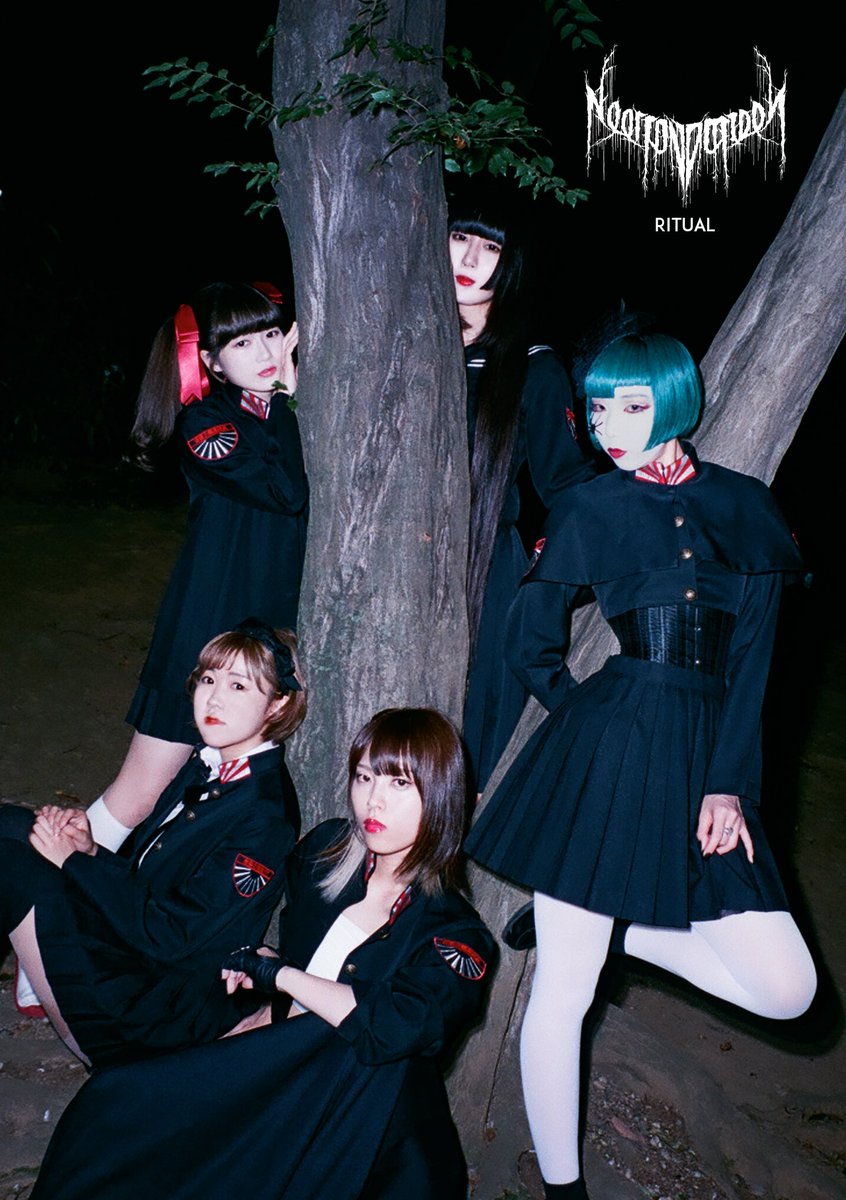
In short, I really like the music. They have a variety of songs that branch between heavy and dark electronic genres, their gimmick lyrically and visually is built around Lovecraft, and the manager is an American who has done well to make them accessible to Western listeners. They have only played in the US a handful of times and those shows were on the West Coast. While visiting Japan, they had a show a short trip from our AirBnB, and I made sure we put our names on the list.
The first thing that I noticed about the venue and show was that it wasn't an idol show as a whole. The venue resembled many dimly lit, small venues with a bar at the back that I have patroned in the US to see rock bands, and that is exactly who sandwiched Necronomidol on the roster that night. Two Japanese noise bands, girls in school uniforms, and a third noise band. This was a decent arrangement for me. I wanted to get an idea of how a rock show went in Japan, and I really wouldn't have been as engaged in seeing idol groups I didn't know.
The second thing that caught my attention was the "idol" aspect of the fan appreciation. I've been to a lot of shows and played in bands before. Seeing the band hanging around is normal and I've never had a musician that seemed particularly bothered by fans being kind. I've said hello and thanks to musicians before. When running to the bar, I saw my favorite of the performers standing at the back of the crowd watching the band before them, in full uniform and makeup, spider glued to her cheek. I kept an eye on the other fans that I could identify as being there to see the band, as maybe a third of the audience had on the band's various shirts. No one addressed her. No one even really looked at her. I didn't, either. I didn't know how this culture worked and wouldn't want to offend anyone, in particular someone I appreciate, even if I was quietly having a mild meltdown. Yes, I've met musicians I arguably liked more before, but it's one thing to see a guy in a touring band from Irvine in DC. It's another to be in a foreign country and see someone you follow on the internet standing in the same room as you as if a significant portion of the room isn't there to see them.
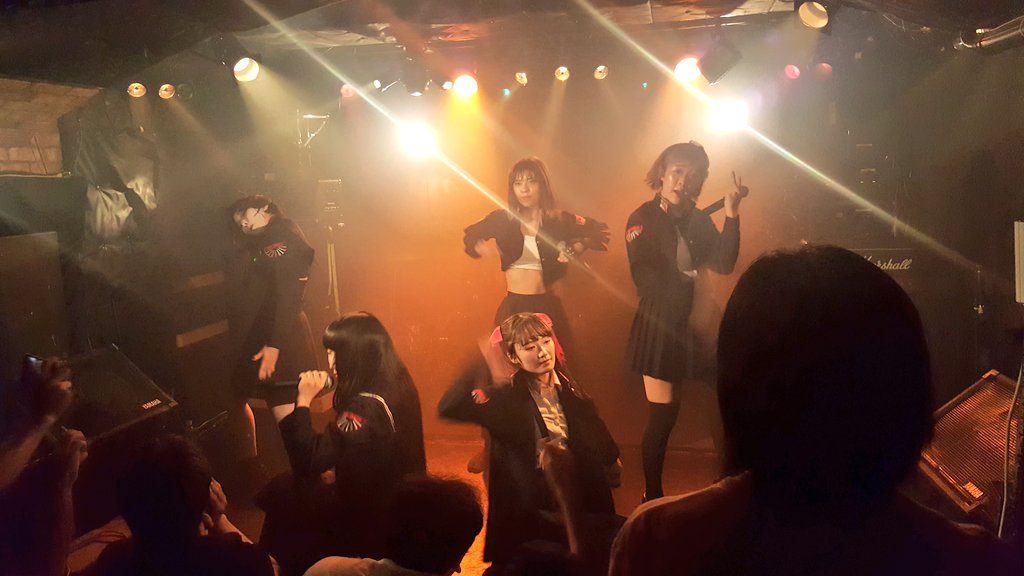
That changed the moment they took the stage. By that, I mean they actually took the stage, coming in from outside, through the crowd, and to their performance. Maybe it's reading too much into it, but knowing the theme of the songs and the concept of idols, it seemed fitting that women who sing songs about ancient gods be bowed down to and praised as they pass, which, no joke, literally happened. It's not an exaggeration to say that the crowd parted like the Red Sea. At US shows, there's always that guy that grabs the singer when they lean close enough in the audience. It's part of the performance of heavy music in the US. That wasn't an issue here.
I had not watched many of the band's performances by choice. I had listened to the albums, I watched the music videos, I've seen interview clips, but I didn't watch the choreography. It didn't seem quite right to me, like going out of my way to read spoilers. That was the element of the show that was brand new for me, and I genuinely appreciated it. I did know that audiences create call and responses for songs, but I wasn't able to find much in the way of a guide, probably because I would need it to be in English and their US performances can be counted on your hands as of the time of writing. The energy and ability they demonstrate in their dancing is remarkable, in particular when considering their voices not only seeming uninhibited by their movement but in some cases better than the dated recordings I have familiarized myself with (another detail about Japanese music culture, as well as still utilizing physical CDs, albums often reuse songs from prior releases with a new, improved recording, and the band's audio quality improves with each release).
I may have been in the dark as to how to participate in the fan dances and responses, but I did have one great exchange. I had on a Goblin shirt and one of the audience members complimented it between bands. We spoke for a while, using his friend as an interpreter occasionally. During the performance, he ran over to me and asked me who my favorite of the young women was. I told him, he nodded and darted back to the stage. During the band's last song, their best known with a pretty accessible audience dance included, he came back and asked again, and I confirmed. Knowing the verses well enough to distinguish which performer sang each line, he pushed me to the front of the crowd just before my favorite performer's verse started, putting me front and center to her. It really spoke to me how connected and involved this audience was, and meant a lot that someone would take the time to make sure I got that experience. It turns out the audience member and I were already friends on social media from my posting about the band, and he has mailed me some merch.
After the last band, the members and audience of the other groups left, leaving a small crowd of Necronomidol devotees. Had someone not explained this to me, a New Zealand man that seemed to know well how these shows worked, I would have left confused. I'm used to a merch table that stays ready to take your money during the show. Idol performances operate differently, or at least this one did. In this instance, fans lined up in one line to purchase merch and tickets for photos with the performers, called "chekis" in Japanese. A second line is formed, which is parsed to create a new line for each of the performers. As the kind guy explained, it's best to get in the less popular lines first, as you can get through it and then rejoin another line if you intended to meet more than one person. I did. My partner and I had established our favorites based on their visuals and online personalities before we left the states; Sari and Himari, as mentioned above. However, Rei, whom I previously knew very little about impressed me with her performance and I snagged a photo with her in addition. As the manager kept track of the sales and snapped photos, each fan got to spend a few minutes with the performer they were taking photos with, one-on-one. My limited Japanese made this slightly awkward but fan interaction is part of the job, and when I ran out of things I knew how to say, they picked up the slack. All of the performers were genuine and kind, and that added a lot to the experience and our appreciation of the performance. We ended up being the last people to leave, asking for a photo with the manager. He recognized my name from sending me merch. I think the somewhat grass roots feel of the band, something that is commercial and standardized as a concept, makes all the difference as an outsider more used to Western music.
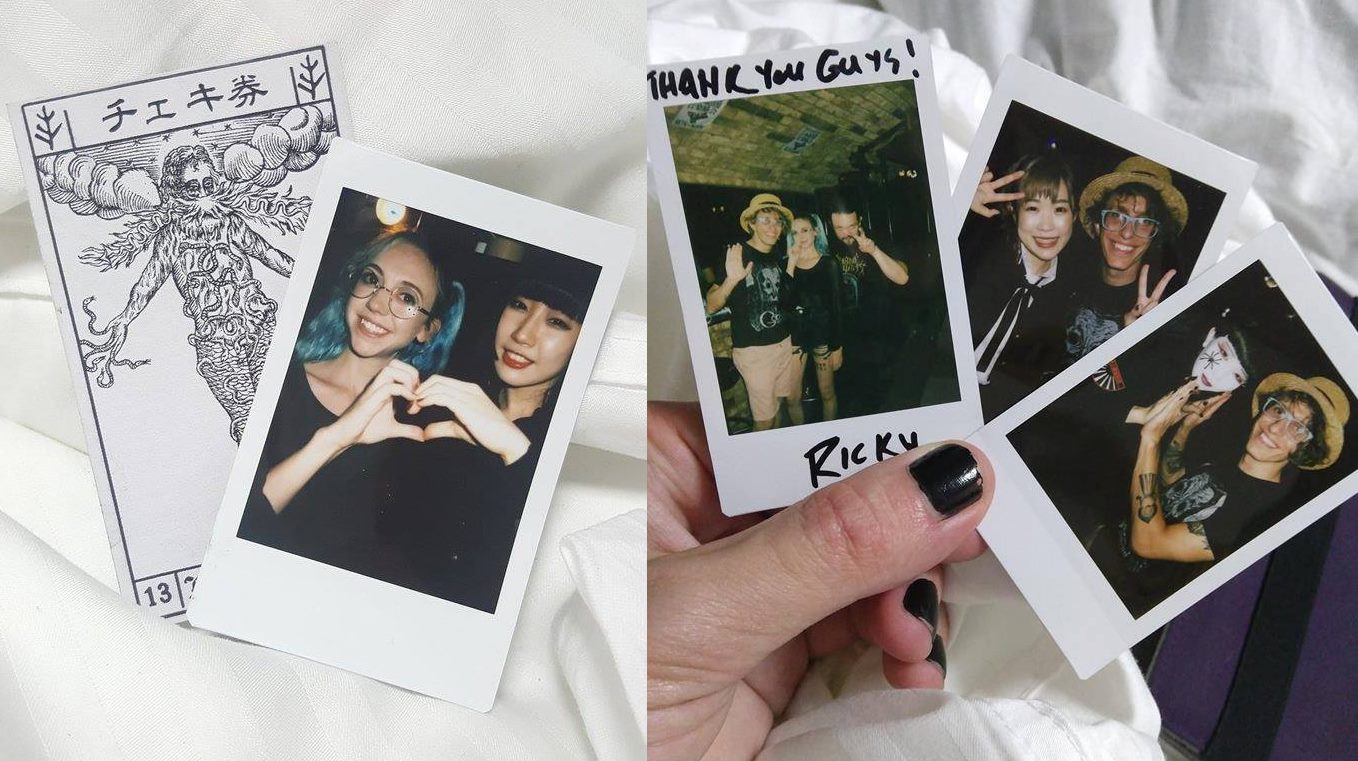
*This article was crossposted to Weeabooze.life, a website where PulpAdded chronicles his adventures in Japanese food and alcohol culture
*

